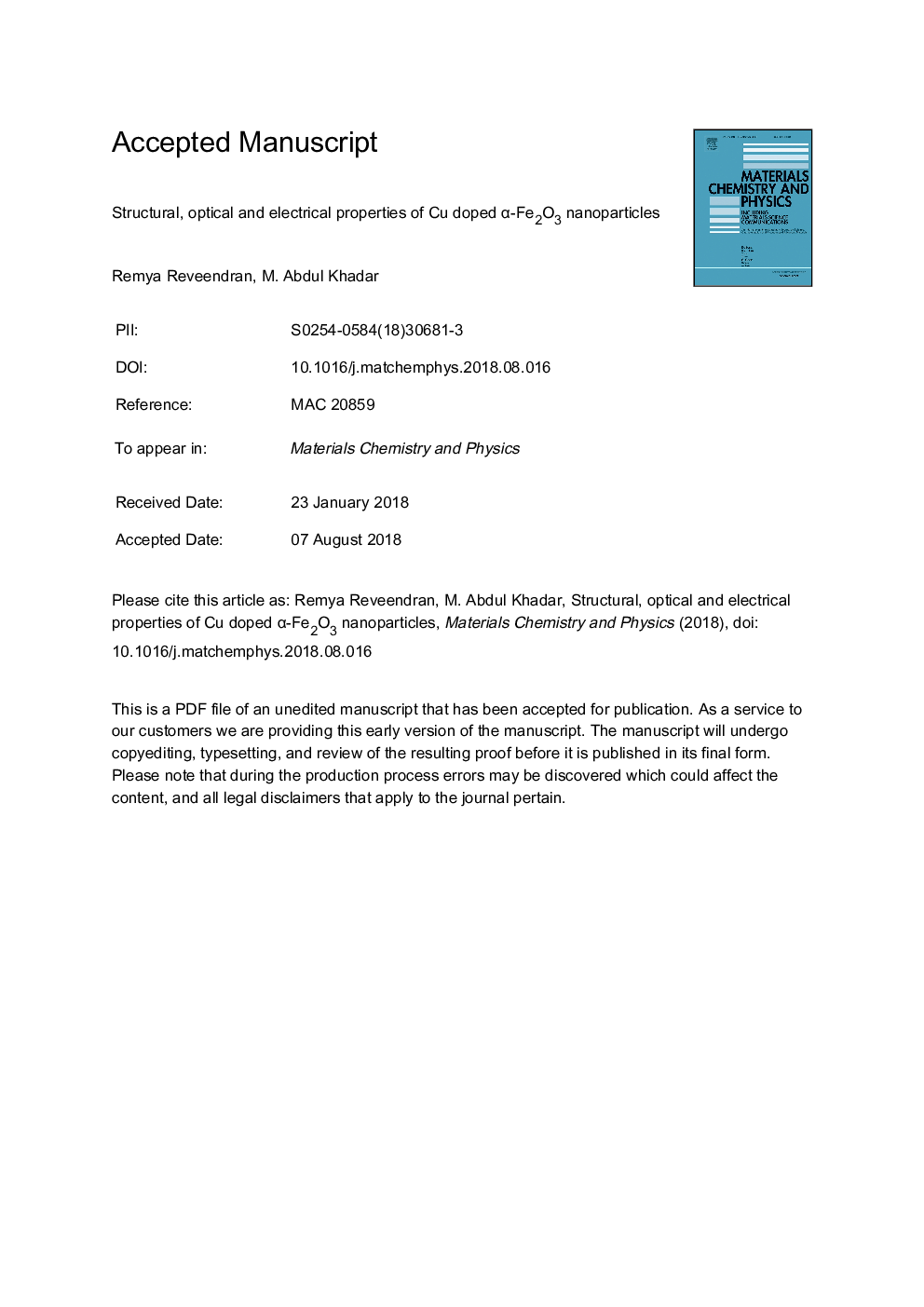| Article ID | Journal | Published Year | Pages | File Type |
|---|---|---|---|---|
| 7921146 | Materials Chemistry and Physics | 2018 | 38 Pages |
Abstract
Undoped and Cu doped α-Fe2O3 (Hematite) nanoparticles (NPs) were synthesized through chemical precipitation technique. X-ray diffraction (XRD) analysis employing Rietveld refinement along with transmission electron microscopy was used for the structural characterization of the NPs. The progressive decrease in the intensity of the XRD peaks and the absence of any peak related to copper oxide phase was interpreted as an indication of the substitutional doping of the NPs. The decrease in the size of the doped NPs with increase in the dopant concentration was explained based on self purification mechanism by which the concentration of the dopant was more near the grain boundaries compared to that near the core. The decrease in the band gap of the NPs with increase in the dopant concentration was a result of substitutional doping. Also, the decrease in the intensity of the Raman peaks with increase in the atom % of Cu was explained as an effect of decreased scattering efficiency of the doped NPs due to an increased concentration of the dopant near the grain boundaries. The photoluminescence intensity of the samples was found to decrease with increase in Cu doping concentration and this was attributed to Cu-Cu luminescence quenching interactions. Analysis of EPR spectrum of undoped α-Fe2O3 NPs showed a weak ferromagnetic character of the sample while that of the Cu doped sample confirmed the incorporation of paramagnetic Cu2+ ions into α-Fe2O3 lattice. DC conductivity study of drop-cast films of undoped and Cu doped α-Fe2O3 NPs showed that the conductivity increased with increase in the doping concentration and that the conductivity approximately satisfied the reported models for its temperature dependence.
Related Topics
Physical Sciences and Engineering
Materials Science
Electronic, Optical and Magnetic Materials
Authors
Remya Reveendran, M. Abdul Khadar,
